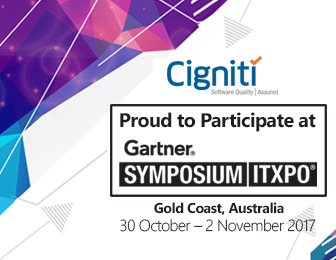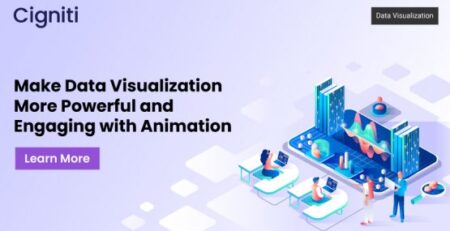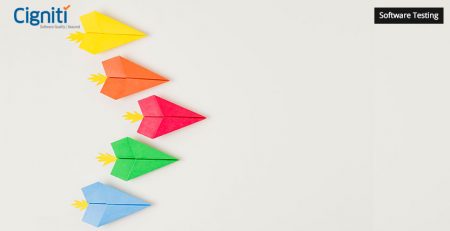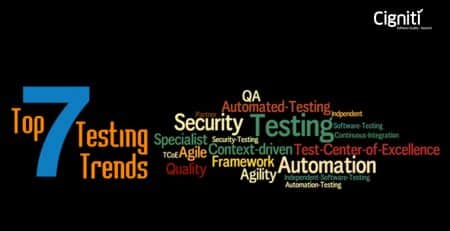Top 5 Technology Trends That Will Need Robust Software Testing In 2018
|
Listen on the go!
|
Recently, when Sophia, a robot developed by Hanson Robotics mocked the warnings by Elon Musk about the dangers of AI, the Tesla and SpaceX CEO lashed out by stating that the race to become the leader in AI could lead to World War III and has warned that humans may have to merge with machines to prevent becoming irrelevant as AI becomes more prevalent. Today, Mobile technology seems pretty normal and IoT seems to be a necessity; similarly the day might come when Artificial Intelligence might become the new you.
Whether it’s Artificial Intelligence, Machine Learning, Smart devices, or Virtualization over the Cloud; every technology demands functional efficiency and performance that can be achieved only with rigorous assessment and constant software testing.
Technology being the core of any major revolution, let’s refer to Gartner’s top technology trends for 2018 and understand the growing need for software testing and quality assurance in this context. The extent of digital and technology growth is only expected to explode over the years, which has raised numerous questions and concerns related to its performance, security, and accessibility. Software Testing and QA being the only resort, it is imperative to weigh the growth of technology in this backdrop.
1. Convergence of technology, people, and devices
Experts have cited that the future technology revolution will see a massive intertwining of people and devices across diverse technology platforms. It will involve smart devices and digital models blending in to create engaging business platforms. Technologies such as Virtual Reality and Artificial Intelligence will help create a smart digital platform to build well-defined, dynamic, and independent systems to offer a connected world.
Nevertheless, every aspect will get eventually connected at the human level, which implies that there is no scope for any risks and the stakes are high. Hence, the connection between people, business, devices, content and services has to be seamless and bring value. In particular, enterprises are increasingly investing in software testing and quality assurance to bring value and stability for their technology ventures.
2. Smart Applications and Analytics
Applications are being developed for various reasons and for diverse industries, and as a matter of fact, these apps are getting more and more complex with added features and functionalities. Some of the applications and solutions such as ERPs even incorporate AI in the background, enhancing value for advanced user experience. These applications will tend to get smarter and will have more third party interfaces that will directly impact how people access these applications at their workplace or at the personal level.
Considering its impact, the need for testing these applications for accessibility, security, and functionality will only grow in the future. Analytics is another upcoming area that draws the need for automating data preparation, insight discovery and insight sharing for diverse business users. These analytics will be used for various reasons due to its business-criticality. Integrating the analytics within the applications will need rigorous testing and validation, as it will eventually impact the users at various levels.
3. AI for Smart Devices/Things
Whether it’s developing a robot and having it to ease human efforts, or its about building intelligent homes/offices, there will be an undying need for building smart devices that could interact and add value to the overall user experience. It is unimaginable to build smarter things without leveraging AI and Machine learning to enable this kind of interaction between devices. This implies that AI and machine learning will be implemented across various systems for varying purposes such as offices, sports, farming, and healthcare. Robots will help automate and ease human tasks, and this will amplify the need for testing the software that makes this happen, enabling enterprises to enter the user scenario with confidence.
4. Edge Computing
Virtualization and Cloud have been transforming the process of technology development and innovation in a big way. As estimated by Forbes, ‘Global cloud IT market revenue is predicted to increase from $180B in 2015 to $390B in 2020, attaining a Compound Annual Growth Rate (CAGR) of 17%.’ Edge Computing optimizes Cloud Computing systems to perform data processing at the edge of the network, at the source of the data. It cuts down the communications bandwidth that is required between sensors and the central data center with analytics and by generation of knowledge at the source of the data.
The highlight of Edge Computing is that the sensors, controllers, and connected devices collectively analyze IoT data themselves, or send it to a nearby computing device – a server or laptop for further processing. In a way, Cloud will help create the service-oriented model and Edge Computing will enable integrated delivery of the Cloud service. Processing of data and interaction between the various nodes needs to be flawless, emphasize on the need to test, and ensure that the processing and collaboration of different elements bring the desired outcome.
5. Blockchain
It is interesting to know that the Blockchain market globally is expected to reach about $339.5M in size by 2017, and estimated to reach $2.3B by 2021. It is a shared, distributed, and decentralized record that eliminates business friction by being independent from individual applications or participants. This technology has presented a great potential especially around financial services, healthcare, and supply chain, apart from others. Nevertheless, skills are need to leverage the technology and monitor the evolution of the platform.
Software Testing and Quality Assurance can play a key role for effective implementation of the technology at the organizational level. The idea around blockchain technology is to ensure security and redundancy within the applications where it is hosted. For instance, if blockchain hosts a banking application, where a node is hit by a DDoS, the other nodes will keep the application operational.
If and when a node is hacked and the hacker tries to fabricate financial data in the user’s account, it will not work considering there is no consensus. Security Testing and Penetration Testing is absolutely critical when it comes to blockchain technology. The overall testing process is referred to as Blockchain Implementation Hardening, which also involves Vulnerability Assessment, Redundancy Testing, Synchronization Testing, and Consensus Algorithm Testing.
In Conclusion
While we have considered the top 10 technologies listed by Gartner to gauge the significance of Quality Assurance and Testing in 2018, these technologies are bound to further revolutionize the consumer scenario. Testing will play a critical role in ensuring that all the products delivered are resilient, relevant, accessible, and secure in the volatile digital space.
IT and Technology-driven organizations need evolved testing practices to validate their development efforts. A Testing Center of Excellence (TCoE) is a centralized unit comprising testing processes, people, tools that operate as shared services in order to provide testing services with optimal benefits across the test organization. Check out Cigniti’s key differentiators in TCoE services to build a futuristic software testing platform for your organizational needs.
Register here to fix a one-on-one 10-minutes meeting with Cigniti Leadership at the ongoing Gartner Symposium/ITxpo 2017 to discuss how to overcome the challenges being posed by these disruptive, yet essential, trends.







Leave a Reply